Edward Kim
Extreme Volatility Prediction in Stock Market: When GameStop meets Long Short-Term Memory Networks
Mar 09, 2021
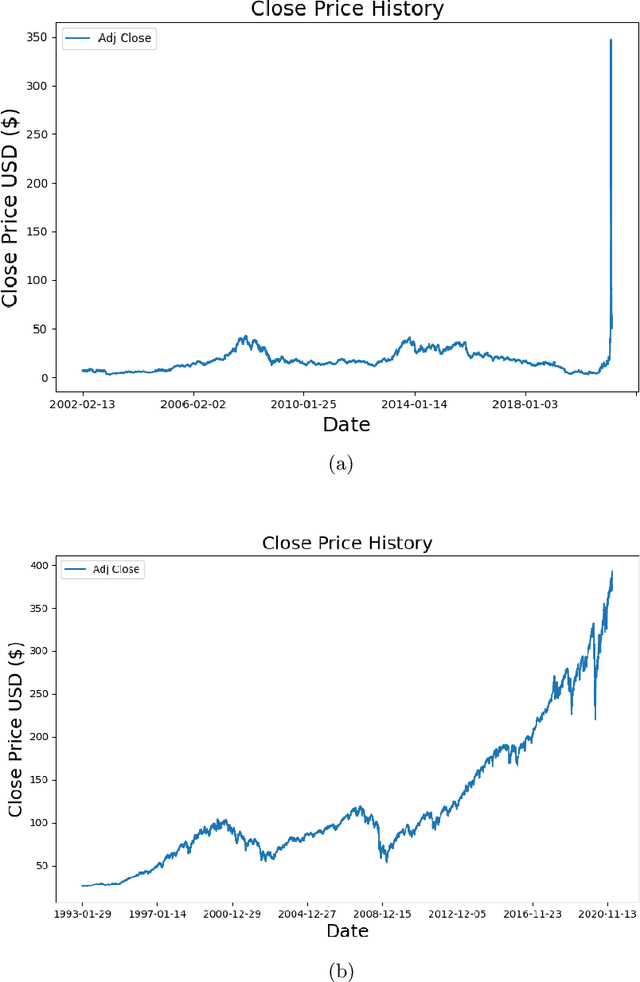
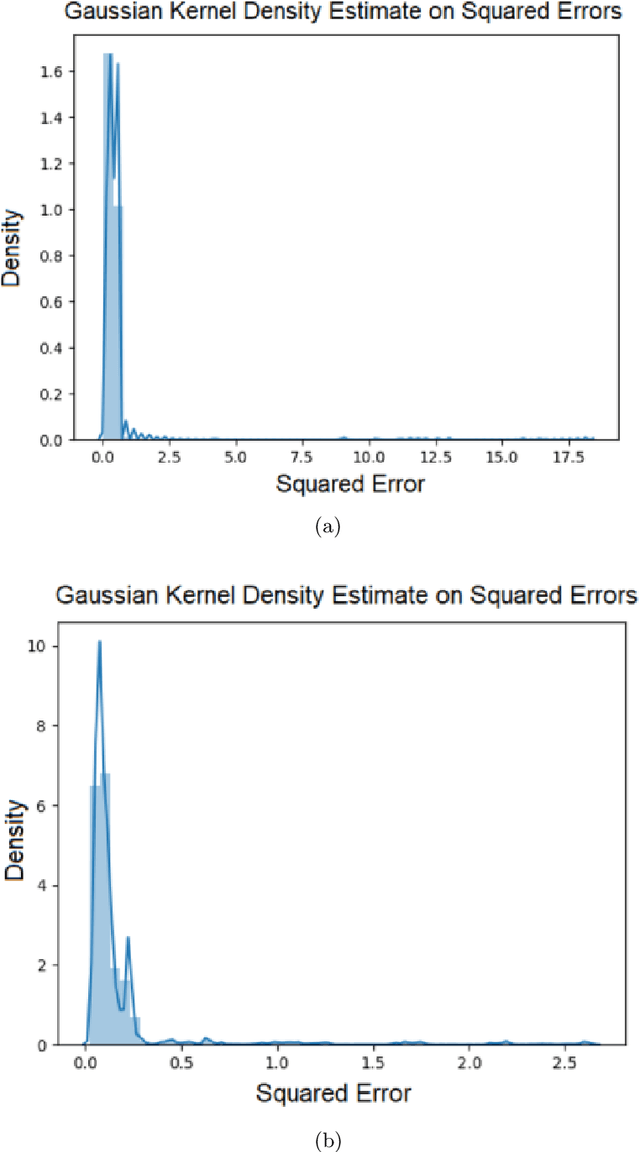
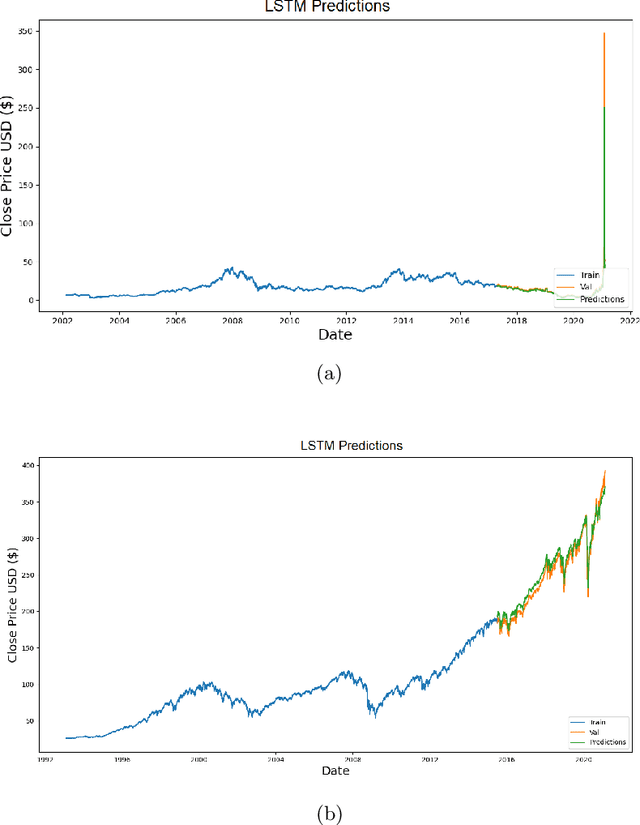
Abstract:The beginning of 2021 saw a surge in volatility for certain stocks such as GameStop company stock (Ticker GME under NYSE). GameStop stock increased around 10 fold from its decade-long average to its peak at \$485. In this paper, we hypothesize a buy-and-hold strategy can be outperformed in the presence of extreme volatility by predicting and trading consolidation breakouts. We investigate GME stock for its volatility and compare it to SPY as a benchmark (since it is a less volatile ETF fund) from February 2002 to February 2021. For strategy 1, we develop a Long Short-term Memory (LSTM) Neural Network to predict stock prices recurrently with a very short look ahead period in the presence of extreme volatility. For our strategy 2, we develop an LSTM autoencoder network specifically designed to trade only on consolidation breakouts after predicting anomalies in the stock price. When back-tested in our simulations, our strategy 1 executes 863 trades for SPY and 452 trades for GME. Our strategy 2 executes 931 trades for SPY and 325 trades for GME. We compare both strategies to buying and holding one single share for the period that we picked as a benchmark. In our simulations, SPY returns \$281.160 from buying and holding one single share, \$110.29 from strategy 1 with 53.5% success rate and \$4.34 from strategy 2 with 57.6% success rate. GME returns \$45.63 from buying and holding one single share, \$69.046 from strategy 1 with 47.12% success rate and \$2.10 from strategy 2 with 48% success rate. Overall, buying and holding outperforms all deep-learning assisted prediction models in our study except for when the LSTM-based prediction model (strategy 1) is applied to GME. We hope that our study sheds more light into the field of extreme volatility predictions based on LSTMs to outperform buying and holding strategy.
Robust SleepNets
Feb 24, 2021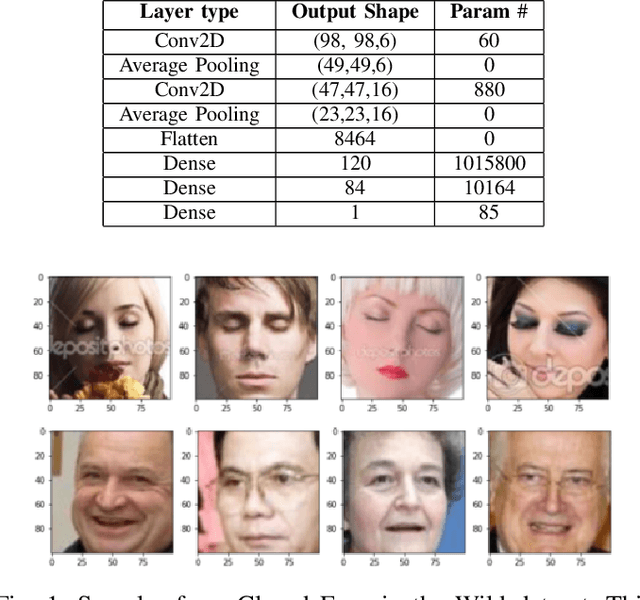
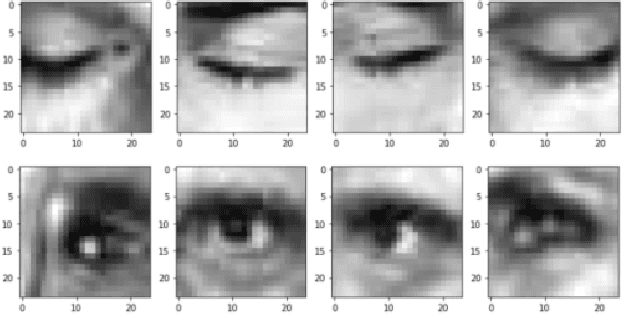
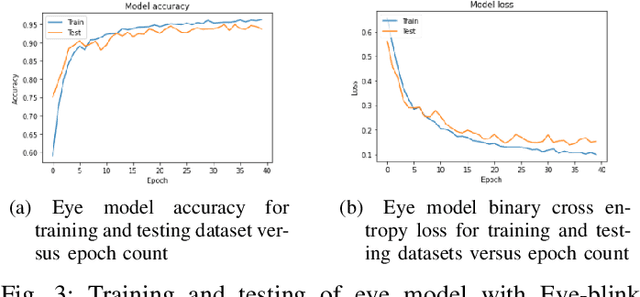
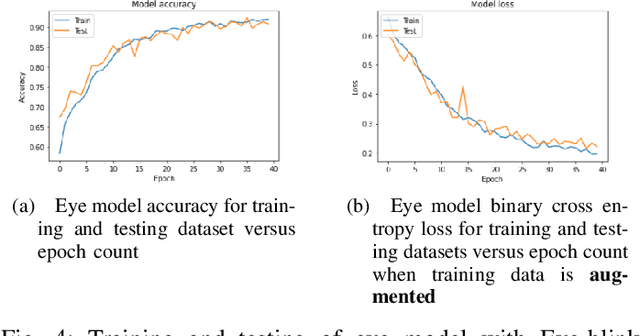
Abstract:State-of-the-art convolutional neural networks excel in machine learning tasks such as face recognition, and object classification but suffer significantly when adversarial attacks are present. It is crucial that machine critical systems, where machine learning models are deployed, utilize robust models to handle a wide range of variability in the real world and malicious actors that may use adversarial attacks. In this study, we investigate eye closedness detection to prevent vehicle accidents related to driver disengagements and driver drowsiness. Specifically, we focus on adversarial attacks in this application domain, but emphasize that the methodology can be applied to many other domains. We develop two models to detect eye closedness: first model on eye images and a second model on face images. We adversarially attack the models with Projected Gradient Descent, Fast Gradient Sign and DeepFool methods and report adversarial success rate. We also study the effect of training data augmentation. Finally, we adversarially train the same models on perturbed images and report the success rate for the defense against these attacks. We hope our study sets up the work to prevent potential vehicle accidents by capturing drivers' face images and alerting them in case driver's eyes are closed due to drowsiness.
Evaluating Online and Offline Accuracy Traversal Algorithms for k-Complete Neural Network Architectures
Jan 16, 2021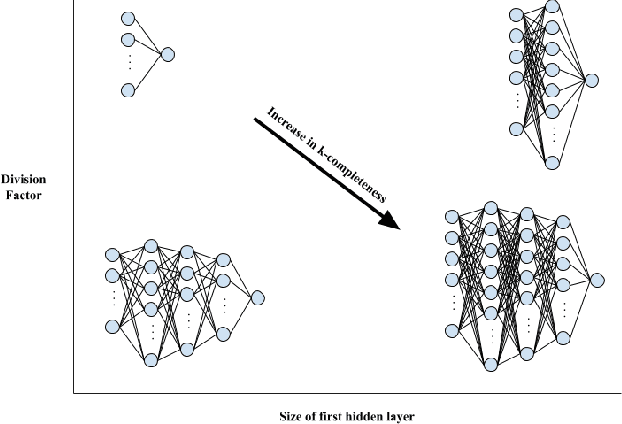
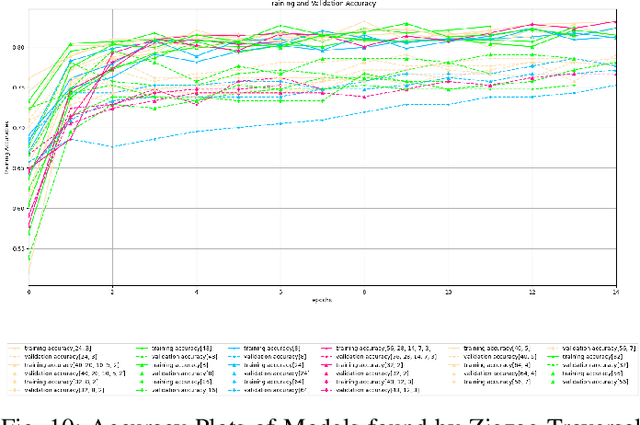
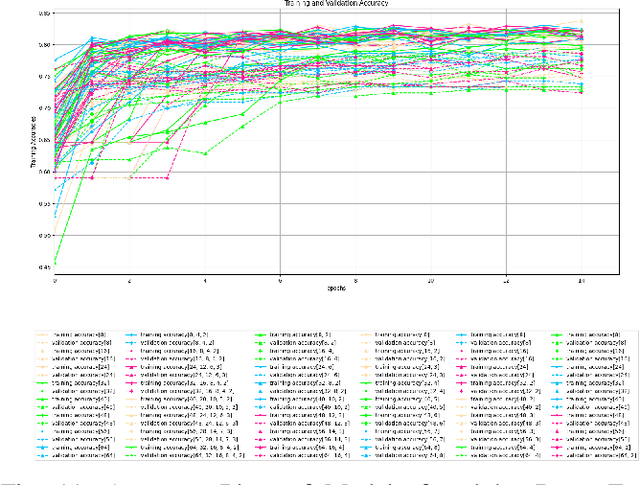
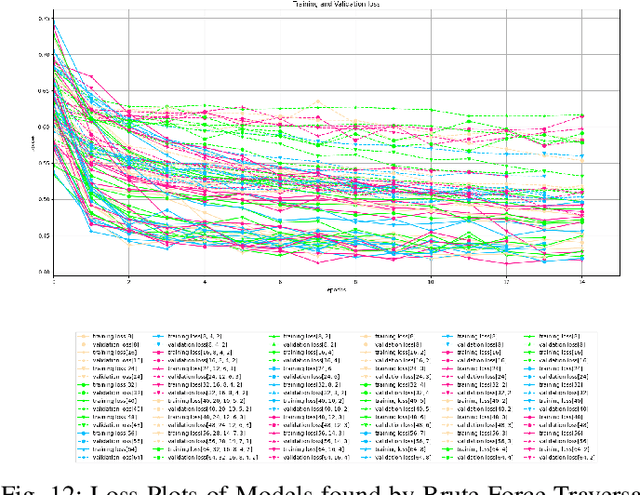
Abstract:Architecture sizes for neural networks have been studied widely and several search methods have been offered to find the best architecture size in the shortest amount of time possible. In this paper, we study compact neural network architectures for binary classification and investigate improvements in speed and accuracy when favoring overcomplete architecture candidates that have a very high-dimensional representation of the input. We hypothesize that an overcomplete model architecture that creates a relatively high-dimensional representation of the input will be not only be more accurate but would also be easier and faster to find. In an NxM search space, we propose an online traversal algorithm that finds the best architecture candidate in O(1) time for best case and O(N) amortized time for average case for any compact binary classification problem by using k-completeness as heuristics in our search. The two other offline search algorithms we implement are brute force traversal and diagonal traversal, which both find the best architecture candidate in O(NxM) time. We compare our new algorithm to brute force and diagonal searching as a baseline and report search time improvement of 52.1% over brute force and of 15.4% over diagonal search to find the most accurate neural network architecture when given the same dataset. In all cases discussed in the paper, our online traversal algorithm can find an accurate, if not better, architecture in significantly shorter amount of time.
Towards Searching Efficient and Accurate Neural Network Architectures in Binary Classification Problems
Jan 16, 2021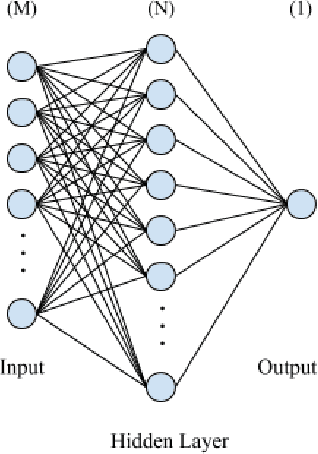
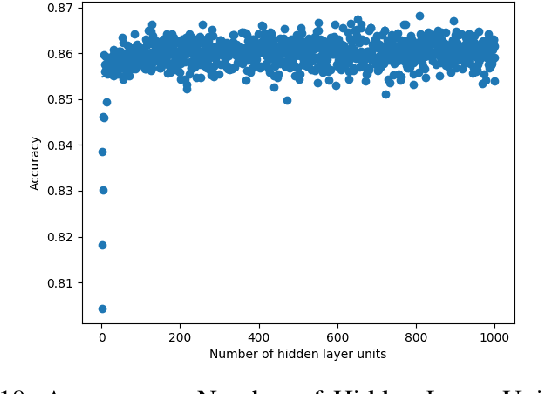
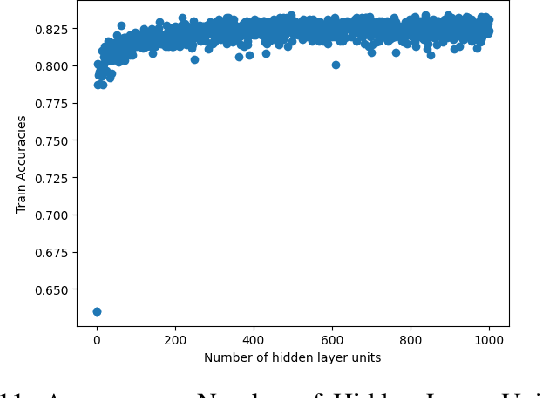
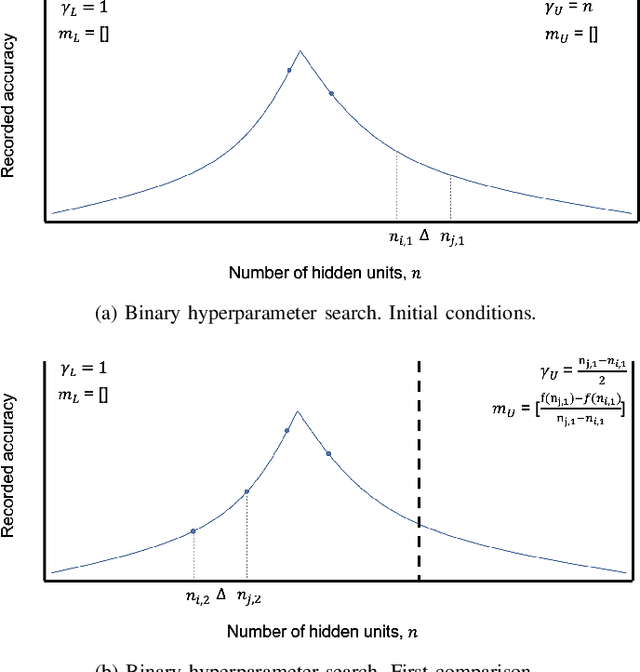
Abstract:In recent years, deep neural networks have had great success in machine learning and pattern recognition. Architecture size for a neural network contributes significantly to the success of any neural network. In this study, we optimize the selection process by investigating different search algorithms to find a neural network architecture size that yields the highest accuracy. We apply binary search on a very well-defined binary classification network search space and compare the results to those of linear search. We also propose how to relax some of the assumptions regarding the dataset so that our solution can be generalized to any binary classification problem. We report a 100-fold running time improvement over the naive linear search when we apply the binary search method to our datasets in order to find the best architecture candidate. By finding the optimal architecture size for any binary classification problem quickly, we hope that our research contributes to discovering intelligent algorithms for optimizing architecture size selection in machine learning.
A Customizable Dynamic Scenario Modeling and Data Generation Platform for Autonomous Driving
Nov 30, 2020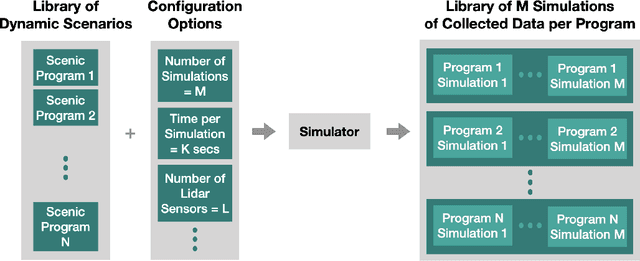
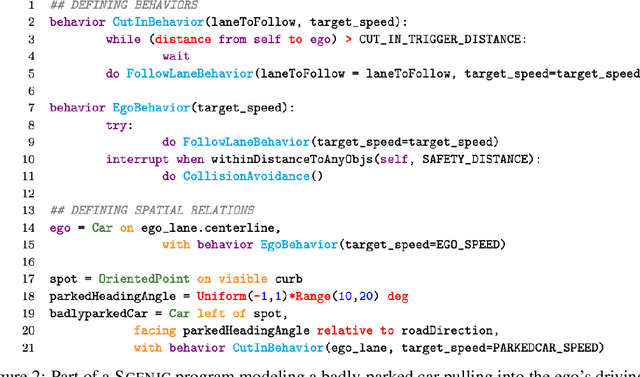
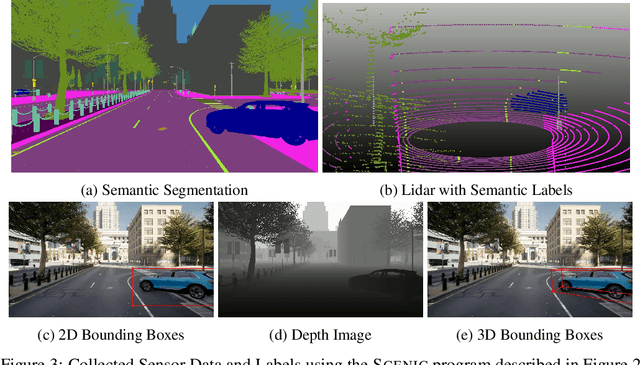
Abstract:Safely interacting with humans is a significant challenge for autonomous driving. The performance of this interaction depends on machine learning-based modules of an autopilot, such as perception, behavior prediction, and planning. These modules require training datasets with high-quality labels and a diverse range of realistic dynamic behaviors. Consequently, training such modules to handle rare scenarios is difficult because they are, by definition, rarely represented in real-world datasets. Hence, there is a practical need to augment datasets with synthetic data covering these rare scenarios. In this paper, we present a platform to model dynamic and interactive scenarios, generate the scenarios in simulation with different modalities of labeled sensor data, and collect this information for data augmentation. To our knowledge, this is the first integrated platform for these tasks specialized to the autonomous driving domain.
The Interpretable Dictionary in Sparse Coding
Nov 24, 2020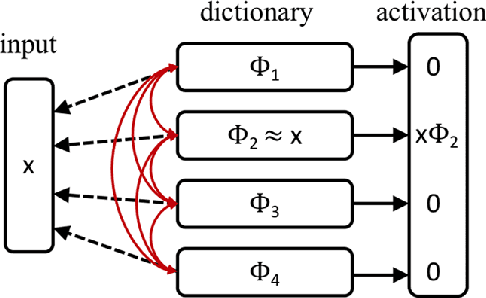

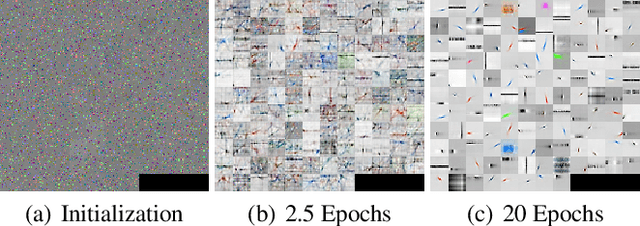
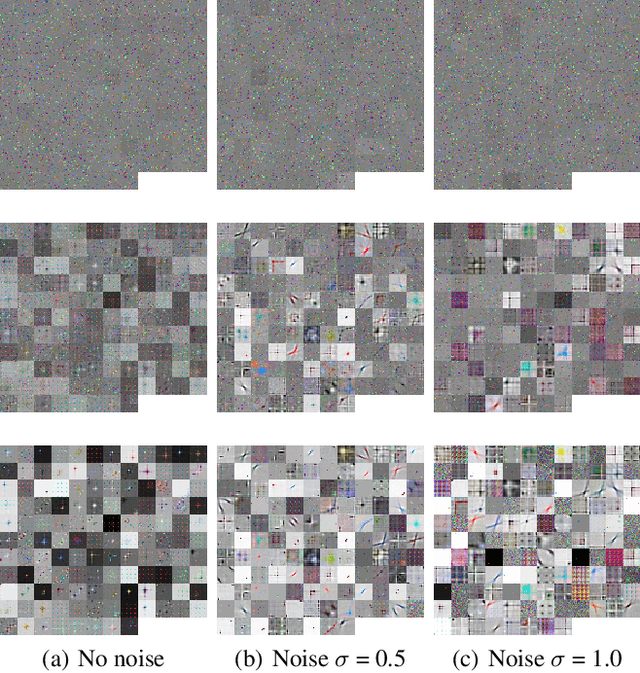
Abstract:Artificial neural networks (ANNs), specifically deep learning networks, have often been labeled as black boxes due to the fact that the internal representation of the data is not easily interpretable. In our work, we illustrate that an ANN, trained using sparse coding under specific sparsity constraints, yields a more interpretable model than the standard deep learning model. The dictionary learned by sparse coding can be more easily understood and the activations of these elements creates a selective feature output. We compare and contrast our sparse coding model with an equivalent feed forward convolutional autoencoder trained on the same data. Our results show both qualitative and quantitative benefits in the interpretation of the learned sparse coding dictionary as well as the internal activation representations.
The Selectivity and Competition of the Mind's Eye in Visual Perception
Nov 23, 2020
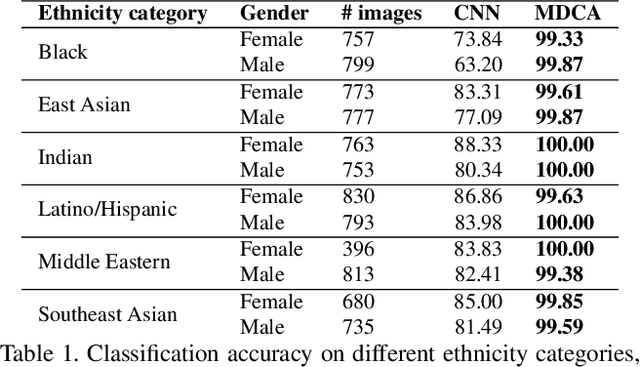
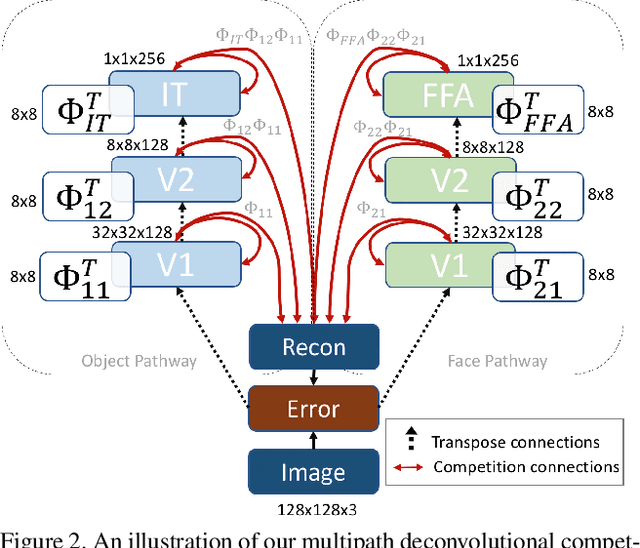
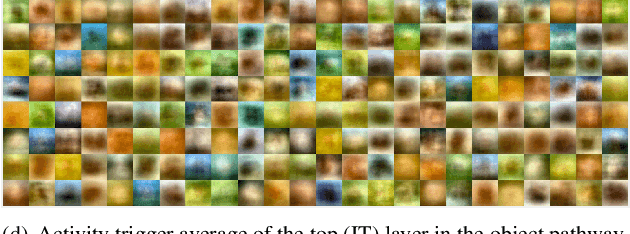
Abstract:Research has shown that neurons within the brain are selective to certain stimuli. For example, the fusiform face area (FFA) region is known by neuroscientists to selectively activate when people see faces over non-face objects. However, the mechanisms by which the primary visual system directs information to the correct higher levels of the brain are currently unknown. In our work, we advance the understanding of the neural mechanisms of perception by creating a novel computational model that incorporates lateral and top down feedback in the form of hierarchical competition. We show that these elements can help explain the information flow and selectivity of high level areas within the brain. Additionally, we present both quantitative and qualitative results that demonstrate consistency with general themes and specific responses observed in the visual system. Finally, we show that our generative framework enables a wide range of applications in computer vision, including overcoming issues of bias that have been discovered in standard deep learning models.
Scenic: A Language for Scenario Specification and Data Generation
Oct 13, 2020

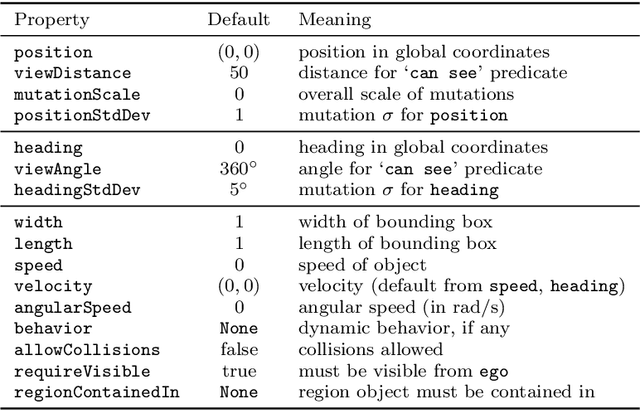
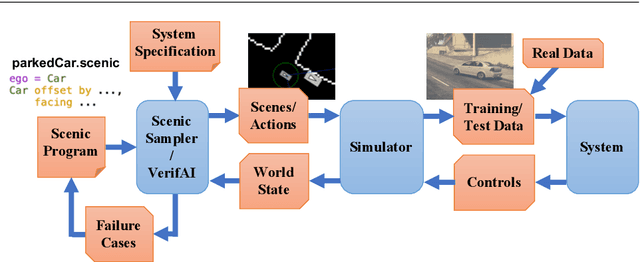
Abstract:We propose a new probabilistic programming language for the design and analysis of cyber-physical systems, especially those based on machine learning. Specifically, we consider the problems of training a system to be robust to rare events, testing its performance under different conditions, and debugging failures. We show how a probabilistic programming language can help address these problems by specifying distributions encoding interesting types of inputs, then sampling these to generate specialized training and test data. More generally, such languages can be used to write environment models, an essential prerequisite to any formal analysis. In this paper, we focus on systems like autonomous cars and robots, whose environment at any point in time is a 'scene', a configuration of physical objects and agents. We design a domain-specific language, Scenic, for describing scenarios that are distributions over scenes and the behaviors of their agents over time. As a probabilistic programming language, Scenic allows assigning distributions to features of the scene, as well as declaratively imposing hard and soft constraints over the scene. We develop specialized techniques for sampling from the resulting distribution, taking advantage of the structure provided by Scenic's domain-specific syntax. Finally, we apply Scenic in a case study on a convolutional neural network designed to detect cars in road images, improving its performance beyond that achieved by state-of-the-art synthetic data generation methods.
Formal Scenario-Based Testing of Autonomous Vehicles: From Simulation to the Real World
Mar 17, 2020

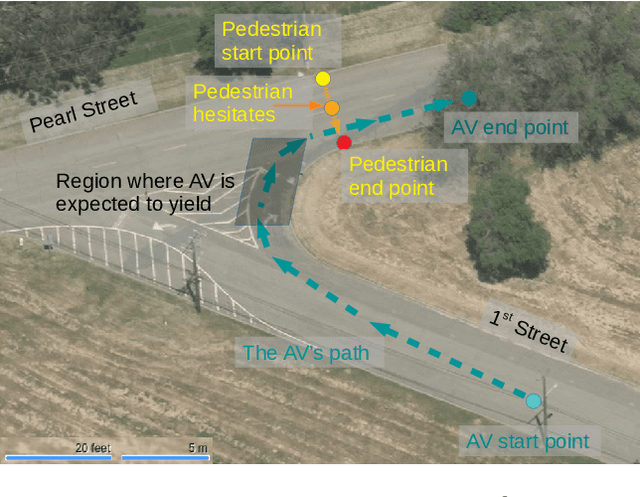
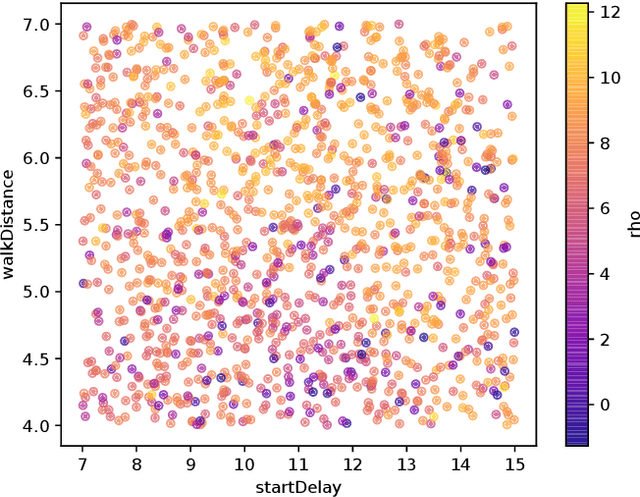
Abstract:We present a new approach to automated scenario-based testing of the safety of autonomous vehicles, especially those using advanced artificial intelligence-based components, spanning both simulation-based evaluation as well as testing in the real world. Our approach is based on formal methods, combining formal specification of scenarios and safety properties, algorithmic test case generation using formal simulation, test case selection for track testing, executing test cases on the track, and analyzing the resulting data. Experiments with a real autonomous vehicle at an industrial testing ground support our hypotheses that (i) formal simulation can be effective at identifying test cases to run on the track, and (ii) the gap between simulated and real worlds can be systematically evaluated and bridged.
A Programmatic and Semantic Approach to Explaining and DebuggingNeural Network Based Object Detectors
Dec 01, 2019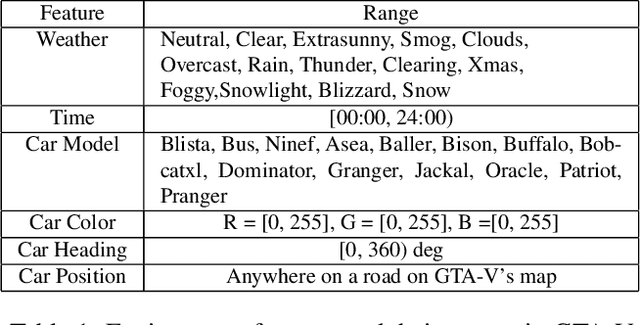
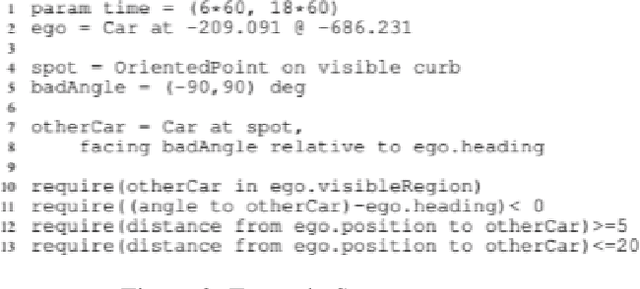
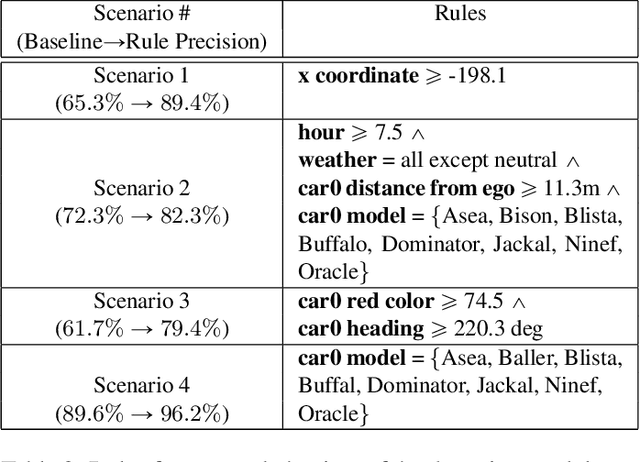

Abstract:Even as deep neural networks have become very effective for tasks in vision and perception, it remains difficult to explain and debug their behavior. In this paper, we present a programmatic and semantic approach to explaining, understanding, and debugging the correct and incorrect behaviors of a neural network based perception system. Our approach is semantic in that it employs a high-level representation of the distribution of environment scenarios that the detector is intended to work on. It is programmatic in that the representation is a program in a domain-specific probabilistic programming language using which synthetic data can be generated to train and test the neural network. We present a framework that assesses the performance of the neural network to identify correct and incorrect detections, extracts rules from those results that semantically characterizes the correct and incorrect scenarios, and then specializes the probabilistic program with those rules in order to more precisely characterize the scenarios in which the neural network operates correctly or not, without human intervention to identify important features. We demonstrate our results using the SCENIC probabilistic programming language and a neural network-based object detector. Our experiments show that it is possible to automatically generate compact rules that significantly increase the correct detection rate (or conversely the incorrect detection rate) of the network and can thus help with debugging and understanding its behavior.
 Add to Chrome
Add to Chrome Add to Firefox
Add to Firefox Add to Edge
Add to Edge